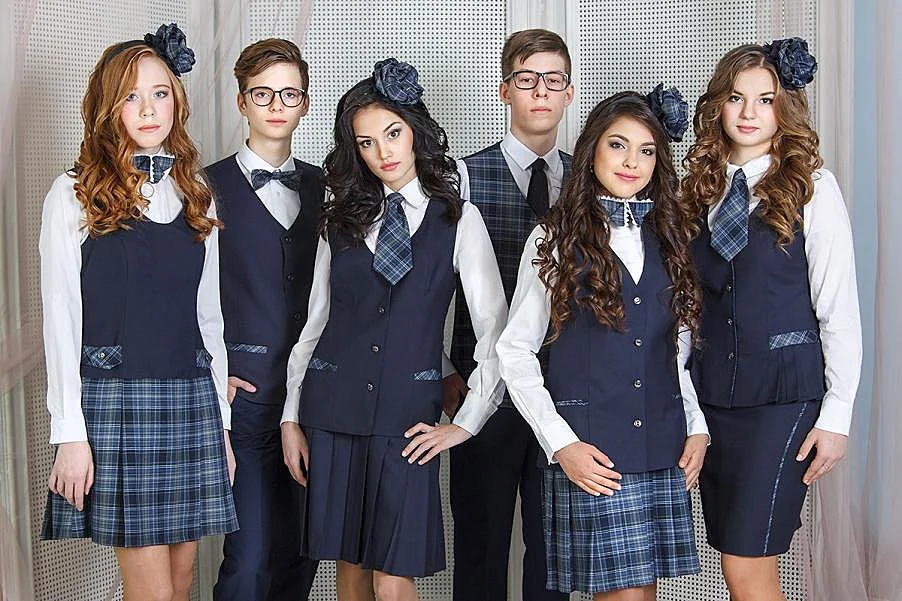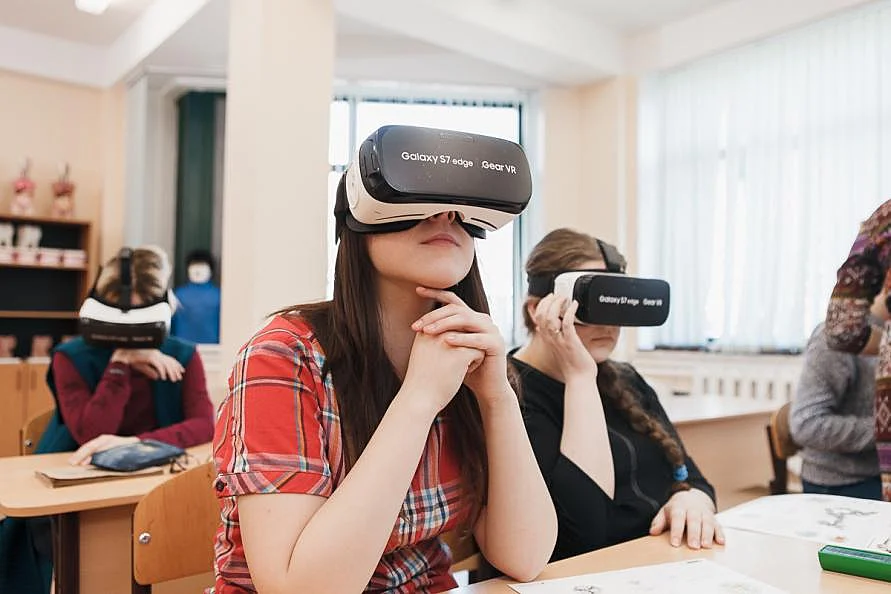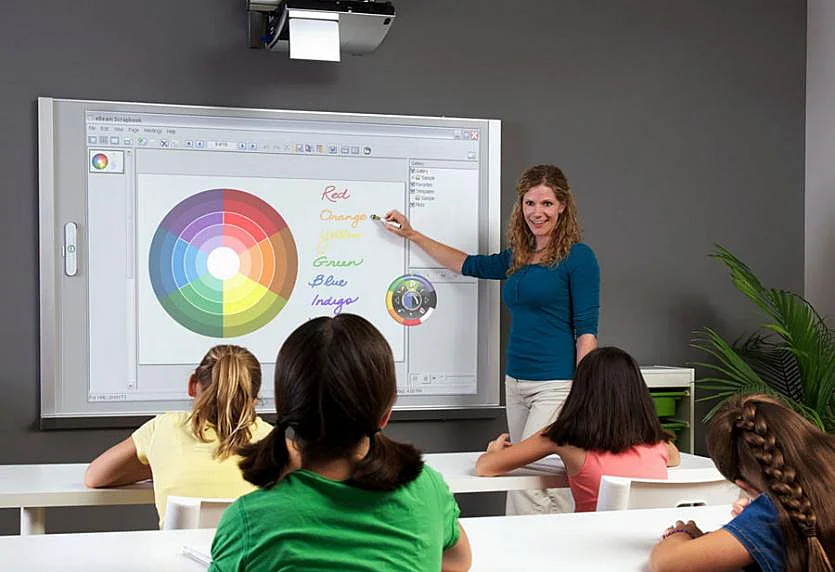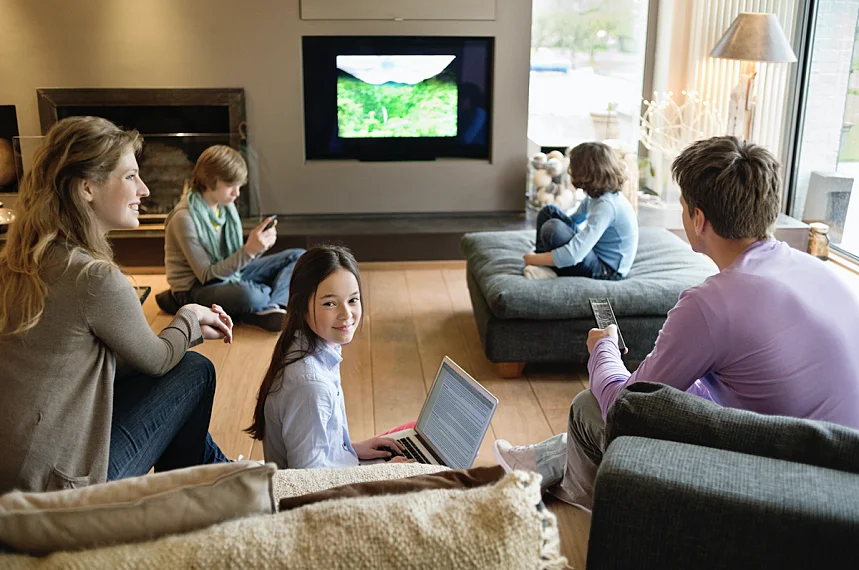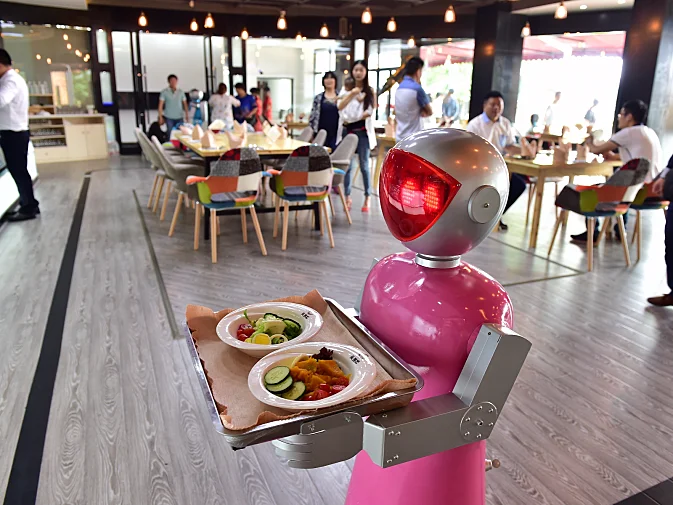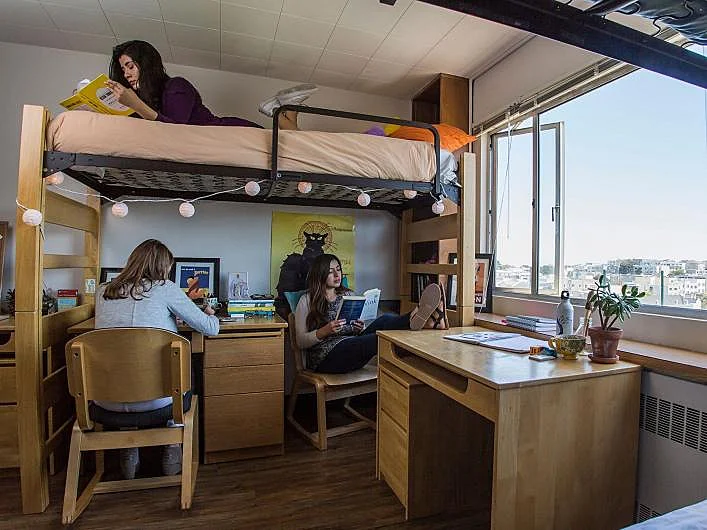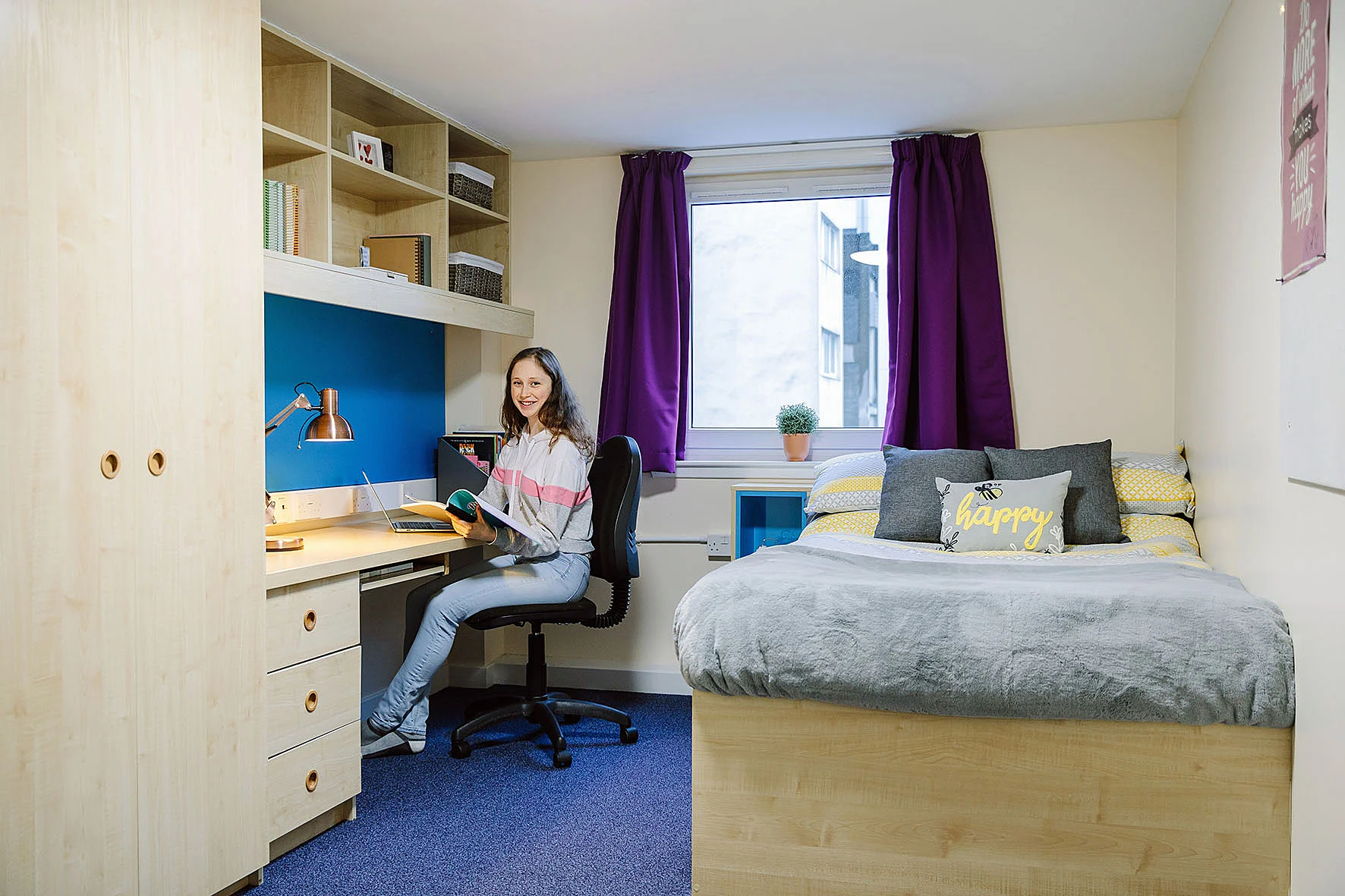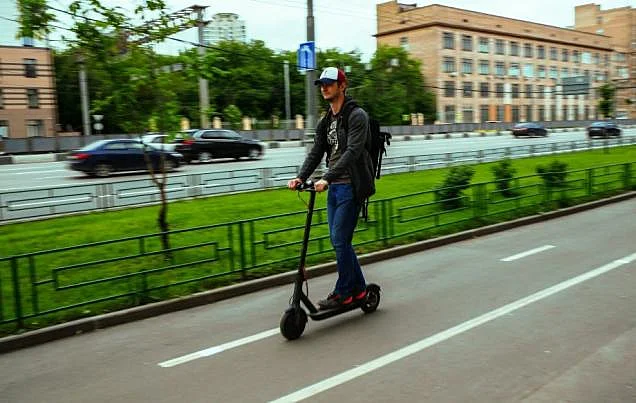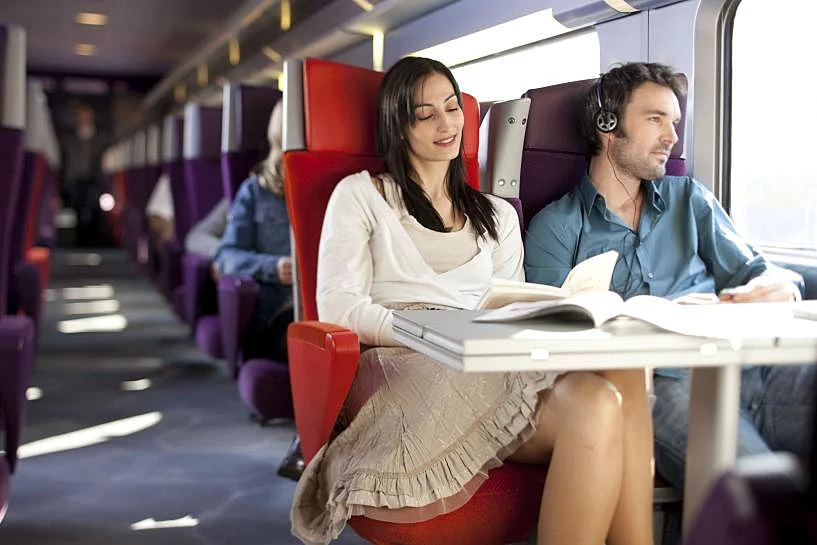Последнее задание в устной части ЕГЭ, или “обоснование выбора иллюстраций к проектной работе и выражение своего мнения по её проблематике” – еще один “лакомый” кусочек, потому что принесет ученику на экзамене 10 баллов при правильном выполнении. Читайте, как его сдать на максимум 👇🏻
Вот так оно выглядит на экзамене:
Легенда такая, что вы с другом делаете проект по одной из тем, которые обозначены в кодификаторе ЕГЭ, нашли две картинки для иллюстрации и рассказываете ему в голосовом сообщении, почему они такие классные и так пригодятся для вашего проекта.
Кстати, вот эти самые темы из кодификатора:
- Повседневный жизнь и быт, распределение домашних обязанностей в семье. Покупки
- Жизнь в городе и сельской местности. Проблемы села и города.
- Общение в семье и школе, семейные традиции, межличностные отношения с друзьями и знакомыми
- Здоровье и забота о нем, самочувствие, медицинские услуги. Здоровый образ жизни.
- Досуг молодёжи, посещение кружкой, спортивных секций, клубов по интересам. Переписка
- Путешествие по своей стране и за рубежом, осмотр достопримечательностей
- Природа и проблемы экологии
- Современный мир профессий, рынок труда
- Высшая школа и продолжение школьного образования
- Выбор профессии
- Роль иностранного языка в современном мире
- Школьное образование. Изучаемые предметы. Каникулы.
- Новые информационные технологии
- Праздники и знаменательные даты в различных странах
Если вас пугает этот список, то вы можете приобрести книгу по лексике, с которым вы подготовитесь к каждой из этих тем и будете знать, о чем говорить в этом задании и какие выражения для этого использовать.
Готовиться к заданию вы будете 2.5 минуты, а на само говорение отводится 3 минуты. Если вы закончили раньше, то все ок. Главное, чтобы осветила все пункты плана и не наделали ошибок.
Критерии оценивания
Как обычно, вначале посмотрим на критерии из официального документа:
А потом я вам им поясню:
Решение коммуникативной задачи (содержание)
Чтобы получить максимум за этот критерий, нужно:
- Сказать 12-15 фраз, то есть 3-4 фразы на каждый пункт плана. Если вы скажете больше, по делу, правильно и уложитесь во время ответа (3 минуты) – никто вас не накажет. Но если скажете меньше – то увы. 10-11 фраз принесут вам 2 балла по этому критерию, 8 – 9 – 1 балл, до 7 фраз – 0 баллов. А если получите 0 за этот критерий, то и 0 поставят за весь ответ.
- Ученик уложился во время
- Ученик раскрыл все 4 пункта плана:
Организация высказывания
Чтобы получить максимум за этот критерий, нужно:
- Не нарушить логику (то есть, переставлять пункты плана местами)
- Сделать вступление с обращением к другу и сказать заключительную фразу
- Использовать связки-переходы между пунктами плана
- Использовать средства логической связи и не допустить в них ошибки
Теперь дам примеры фраз, которые нужно вставлять в ответ:
Вступление
- Hi Yoda, how are you doing? I have sent you some pictures for our project “…” and I’d like to say a few words about them
- Hi Joker, I’ve found 2 photos for our project and I would like to tell you about them
Краткое описание и различия (1 пункт плана)
- Let me start with describing the pictures. In the first one there is/are … In the other picture you can see …
- Let me describe the pictures for you. The first photo shows … In the second photo one can see …
- I have chosen these pictures because they perfectly illustrate our project …
- These pictures are perfect for our project because they show/illustrate …
- Obviously, there are some differences between the pictures. In the 1st one …, but in the 2nd one …. Apart from that, in the first picture …, whereasin the other picture …
- These photos are quite different. There is/are … in the first picture, while there is/are … in the second one.
- As for the differences in the pictures, one can see that there is/are …
- Talking about the differences, the key difference is that in the 1st picture …, while in the 2nd picture ….
Достоинства (2 пункт плана)
- Now I will discuss the advantages of ….
- The great advantage of … is that …
- As for the advantages, … .
- Talking about …, its advantage is that … .
Недостатки (3 пункт плана)
- Now I will discuss the disadvantages of ….
- One of the key disadvantages of … is …
- As for the disadvantages, … .
- Talking about …, its drawback is that … .
Мнение (4 пункт плана)
- Personally, I … because …
- In my opinion, … The main reason for this is the fact that …
- As for me, I … because …
- In conclusion, I would like to say that I consider …
Заключение
- That’s all for now. Tell me your opinion about the pictures!
- That’s it. Please, tell me what you think about these photos.
- That’s all from me now, Please, get in touch with me and say what you think about the photos.
То есть, план ответа должен выглядеть вот так:
- introduction
- give a brief description of the photos (connected with the topic) + note the differences (2 черты – мой личный совет)
- mention the advantages (2 пункта – мой личный совет)
- mention the disadvantages (2 пункта – мой личный совет)
- express your opinion on the subject of the project – which … you prefer and why (тема написана в задании)
- conclusion
А ученикам предлагаю вот такой ☠️ “скелет” ☠️ высказывания:
- Hi Yoda, how are you doing? I have sent you some photos for our project “NAME” and I’d like to say a few words about them.
- Let me describe them for you. In the first picture one can see … . There is/are … in the second picture. Talking about the differences, the key difference is that in the 1st picture …, while in the 2nd picture ….
- I believe that … presented in the pictures have their advantages and disadvantages.
- As for the advantages of …, I would name ….
- Talking about the disadvantages of …
- Personally, I … The main reason for this is the fact that …
- That’s all from me now. Please, get in touch with me and tell me what you think about these photos.
Языковое оформление высказывания
Чтобы получить максимум за этот критерий, нужно:
- Допустить не больше 3-ех НЕгрубых лексико-грамматических ошибок или 3-ех НЕгрубых фонетческих ошибок
Чтобы понять, что за НЕгрубая ошибка такая, дадим определение обратному термину. Грубая ошибка – ошибка, искажающая понимание высказывания – отсутствие согласования подлежащего и сказуемого (they am/ he have), неправильная постановка артикля (in background/ we see a people), употребление Present Simple при описании картинки, ошибка в элементарной лексике (dress вместо wear, watch вместо look at, beer вместо bear), произношение слова thing /θɪŋ/ как /sɪŋ/. По-простому, это грамматика, лексика и произношение слов, которые все знают уже на уровне Pre-Intermediate.
Пример ответа
А теперь, используя мою схему, приведу образец ответа на это задание:
- Hi Yoda, how are you doing? I have sent you some photos for our project “Shopping” and I’d like to say a few words about them.
- Let me describe them for you. In the first picture one can see a happy family standing in the aisle of a supermarket. They’ve got a basket full of groceries in front of them. There is a woman sitting at home in front of her laptop in the second picture. She’s holding a credit card and smiling. Talking about the differences, the key difference is that in the 1st picture the family is shopping in a supermarket, while in the 2nd picture the woman is shopping online.
- I believe that the two types of shopping presented in the pictures have their advantages and disadvantages. As for offline shopping, its biggest advantage is that you can spend quality time with your family while going around the supermarket shopping for groceries. Talking about online shopping, one of its advantages is that you don’t have to carry heavy bags home as you can get your groceries delivered home.
- Now I will discuss the disadvantages of the two types of shopping. Offline shopping can be quite time-consuming as you have to spend time on the way to the shop and back home. While shopping online, if you are not careful enough your credit card details might be stolen and you can lose your money.
- Personally, I prefer online shopping because I hate going to regular shops. I dislike these crowds of people that fight for discounts and their place in the queues. When I shop online, there’s only me in the room so I do not suffer from any stress.
- That’s all from me now. Please, get intouch with me and tell me what you think about these photos.
(25 фраз)
У меня получилось прям высказывание высокого уровня. На экзамене вы можете говорить с использованием сложных грамматических структур и лексики, а можете – незаковыристо. Если соблюли все критерии и не сделали ошибок, ответ будет оценен на максимальный балл.
Основные ошибки
Теперь про основные “ляпы” учеников в этом задании.
В содержании:
- забывают вступление и заключение
- говорят не 2 черты отличий фото, и теряют по кол-ву фраз в ответе
- говорят мало фраз
- повторяют идеи в разных пунктах и грамматические структуры с лексикой
- забывают, что нужно назвать тему проекта, которая написана в задании (в нашем задании – “shopping”
- не используют подсказку из 2-го и 3-го пункта задания с advantages/disadvantages (в нашем примере – “the two types of shopping”)
- забывают, что в пункте 4 у нас уже написана проблема, по которой нужно высказать мнение, и придумывают свою и/или используют другую формулировку (например, в задании написано “prefer”, а говорят “would prefer”, например в нашем задании нужно сказать – “prefer offline/online shopping”)
- не укладываются во время и ученикам минусуют пункты, которые остались за пределами 3 минут высказывания
Последний пункт – прям типичное слабое место всех ЕГЭшников. Они очень долго не могут придумать, что сказать и как не повториться в идеях, и в итоге теряют время на записи ответа. Чтобы этого избежать, на первом этапе тренировки придерживаемся такого алгоритма подготовки: -> brainstorm карточки – прописываем ответ на это задание -> отчитываем -> заучиваем -> тренируемся с диктофоном. Если не получилось уложиться в 3 минуты, повторяем тренировку с диктофоном, пока не натренируем намертво.
Когда ученики запомнили схему ответа, уже ничего не записываем, тренируемся вживую на уроках. Если проблема повторяется, “долбим” проблемное задание, пока не получится уместить свой красивый ответ в эти ненавистные уже 3 минуты.
Некоторые репетиторы говорят, что начинают тренировать устную часть за 2 месяца до экзамена, чтобы не тратить на неё время в течение года. Я так не делаю, даже с учениками, с которыми занимаюсь больше, чем 9 месяцев до ЕГЭ. В моей практике надо хотя бы начинать её тренировать за полгода, пусть не очень усиленно, но нужно. Подкреплю примером. Недавно готовила к ЕГЭ девочку, с которой занималась 4-е года. В 2018 она сдала ОГЭ по английскому, потом экстернатом заканчивала 11 класс и сдавала ЕГЭ. Устную часть она не могла сделать мне на максимум около 3-ех месяцев.
В грамматике:
- Используют Present Simple при описании того, что видят на фотографии – The children hold presents
- Ставят неправильный предлог в словосочетании “in the picture/ photo” – there’s a family on/at the picture/ photo
- Забывают артикли – “there is boy in the photo” или ставят неправильные. Например, первый раз сказали про этого мальчика “a boy”, и продолжают про него говорить с неопределенным артиклем, хотя второй раз нужно говорить “the boy”
- Забывают окончание -s – “the photo show us children in the park”, или ставят его туда, где не нужно – “both pictures shows us …”
Нужно замечать, какие ошибки у ученика любимые и заставлять его контролировать себя. Можно задавать ему на дом сравнивать картинки, записывать себя на микрофон, слушать и отслеживать ошибки. Ну и вместе разбирать их на уроке.
На мой взгляд, задание совсем несложное, нужно просто выучить план ответа и хорошо его оттренировать.
Еще не забываем, что на экзамене вместе с учеником начнут сразу говорить еще несколько человек, которые сидят в компьютерном классе. Поэтому на занятиях полезно включать радио, или телевизор, когда ученик делает устную часть. Помогает справляться с звуковыми помехами на экзамене.
И еще
Пока не выпустили адекватных пособий для подготовки к этой части экзамена (кроме моей книги по устной части) И так как ФИПИ совсем недавно утвердило эту демоверсию, в интернете вы можете найти много неточной информации по этому заданию и фейков. Помните, самая точная информация – ТОЛЬКО НА ФИПИ.
Кстати, у эксперта на экзамене будет вот такая схема оценивания. Очень удобно!
Если вы этого еще не сделали – покупайте план ЕГЭ, который помог более 1.000 преподавателей по английскому подготовить своих учеников на высокие баллы
P.S. Про разделы и стратегии выполнения заданий ЕГЭ можно еще почитать:
Аудирование, задания 1 — 9
Чтение, задания 10 — 18
Грамматика, задания 19 — 25
Словообразование, задания 26 — 31
Лексика, задания 32 — 38
Личное письмо, задание 39
Проект, задание 40
Устная часть, задание 1
Устная часть, задание 2
Устная часть, задание 3
ELTgram от Ирины Кузнецовой
ВАРИАНТ 1
Task 1. Imagine that you are preparing a project with your friend. You have found some interesting material for the presentation and you want to read this text to your friend. You have 1.5 minutes to read the text silently, then be ready to read it out aloud. You will not have more than 1.5 minutes to read it.
The first human carrying flight technology was the hot air balloon. While unmanned balloons have been around in some form for thousands of years, the first flight with people aboard was in 1782. The large balloon on top is called an “envelope”. It holds hot air created by a heat source known a burner. The burner creates an open flame by burning a mix of propane and air. Hot air balloons are capable of floating because the hot air inside the envelope has a lower density than the colder air outside. The top of the balloon usually has a vent which allows the pilot to control the speed of ascent or descent. Passengers typically stand in a basket beneath the envelope. While most envelopes have a standard balloon shape, others are designed to look like animals, cartoon characters and other fun objects.
Task 2. Study the advertisement. You are considering celebrating your birthday at a restaurant and now you’d like to get more information. In 1.5 minutes you are to ask four direct questions to find out about the following:

- location
- music choice
- price per person
- discounts for students

Task 3. You are going to give an interview. You have to answer five questions. Give full answers to the questions (2-3 sentences). Remember that you have 40 seconds to answer each question.
Tapescript for Task 3
Interviewer: Hello everybody! It’s Future Career Channel. Our guest today is a teenager from Russia and we are going to discuss his future career. We’d like to know our guest’s point of view on this issue. Please answer five questions. So, let’s get started.
Interviewer: What two school subjects are the most important for your future job?
Student: _________________________________________
Interviewer: What job would you like to have in the future?
Student: _________________________________________
Interviewer: Do your relatives approve of your career choice?
Student: __________________________________________
Interviewer: What job did you use to like when you were younger?
Student: __________________________________________
Interviewer: Would you like to follow in your parents’ footsteps in choosing a career? Why?
Student: __________________________________________
Interviewer: Thank you very much for the interview!
Task 4. Imagine that you are doing a project “Types of Shopping” together with your friend. You have found some illustrations and want to share the news. Leave a voice message to your friend. In 2.5 minutes be ready to tell the friend about the photos:
- explain the choice of the illustrations for the project by briefly describing them and noting the differences;
- mention the advantages (1-2) of the two types of shopping;
- mention the disadvantages (1-2) of the two types of shopping;
- express your opinion on the subject of the project – which type of shopping you would prefer and why.
You will speak for not more than 3 minutes (2-3 sentences for each item of the plan, 12–15 sentences total). You have to talk continuously.
Photo 1 Photo 2
ВАРИАНТ 2
Task 1. Imagine that you are preparing a project with your friend. You have found some interesting material for the presentation and you want to read this text to your friend. You have 1.5 minutes to read the text silently, then be ready to read it out aloud. You will not have more than 1.5 minutes to read it.
Many lands that had once been swamps were drained or filled in. There are different reasons why people drained swamplands. Some were drained to fight diseases caused by insects that lived in them. Because swamps were considered unpleasant places in which to live and harmful to health, many people thought that unless they were drained the land was worthless.
Other swamps were drained to make new land. As the population grew and more land was needed, people drained swamps or filled them to make room for more farms and factories, more roads and airports.
Few people thought that it might be harmful to get rid of swamps. As swamps disappeared, other things happened. There were both more floods and more droughts than before. There were also more fires, for swamps had acted as firebreaks. Hunters noticed that there was less wild game. Wild life that once lived in the swamps was dying out, because it had no place to live.
Task 2. Study the advertisement. You are going to visit a natural history museum and now you’d like to get more information. In 1.5 minutes you are to ask four direct questions to find out about the following:

- opening hours
- special exhibitions
- transport to the museum
- ticket price
Task 3. You are going to give an interview. You have to answer five questions. Give full answers to the questions (2-3 sentences). Remember that you have 40 seconds to answer each question.
Tapescript for Task 3
Interviewer: Hello everybody! It’s Holidays and Celebrations Channel. Our guest today is a teenager from Russia and we are going to discuss holidays and celebrations in Russia. We’d like to know our guest’s point of view on this issue. Please answer five questions. So, let’s get started.
Interviewer: What public holidays are celebrated in Russia?
Student: _______________________________________
Interviewer: What is your favourite public holiday? Why?
Student: _______________________________________
Interviewer: Do you like public celebrations? Why?
Student: _______________________________________
Interviewer: How did you celebrate last Christmas?
Student: _______________________________________
Interviewer: Where would you like to spend the best New Year holidays in your life? Why?
Student: _______________________________________
Interviewer: Thank you very much for the interview!
Task 4. Imagine that you are doing a project “Best Ways of Sightseeing” together with your friend. You have found some illustrations and want to share the news. Leave a voice message to your friend. In 2.5 minutes be ready to tell the friend about the photos:
- explain the choice of the illustrations for the project by briefly describing them and noting the differences;
- mention the advantages and disadvantages (1-2) of the two ways of sightseeing;
- mention the disadvantages (1-2) of the two ways of sightseeing;
- express your opinion on the subject of the project – which way of sightseeing you prefer and why.
You will speak for not more than 3 minutes (2-3 sentences for each item of the plan, 12–15 sentences total). You have to talk continuously.
Photo 1 Photo 2
ВАРИАНТ 3
Task 1. Imagine that you are preparing a project with your friend. You have found some interesting material for the presentation and you want to read this text to your friend. You have 1.5 minutes to read the text silently, then be ready to read it out aloud. You will not have more than 1.5 minutes to read it.
People have always told stories and legends to explain natural, but mysterious, occurrences such as the Northern Lights. The Vikings believed the Northern Lights were caused by the shining weapons of warriors. The Alaskan people thought the lights were the souls of salmon, deer and other animals. The Indians told the stories of giants living in the North and thought the lights were their torches.
The Northern Lights are actually caused by electrons from solar winds. They are attracted to the poles by the magnetic fields found there. They mix with gases in the atmosphere, which causes the gases to glow. The Northern Lights are most visible in the far north. They are typically green, purple, red or blue.
Task 2. Study the advertisement. You are considering renting a bike and now you’d like to get more information. In 1.5 minutes you are to ask four direct questions to find out about the following:

- location of rentals
- documents accepted
- price per hour
- opening hours
Task 3. You are going to give an interview. You have to answer five questions. Give full answers to the questions (2-3 sentences). Remember that you have 40 seconds to answer each question.
Tapescript for Task 3
Interviewer: Hello everybody! It’s School Channel. Our guest today is a teenager from Russia and we are going to discuss school uniform. We’d like to know our guest’s point of view on this issue. Please answer five questions. So, let’s get started.
Interviewer: Do you have to wear school uniform?
Student: ___________________________________________
Interviewer: Why is it important to wear school uniform? Why?
Student: ___________________________________________
Interviewer: What clothes do you usually wear to school?
Student: ___________________________________________
Interviewer: Did your parents use to wear school uniform in the past?
Student: ___________________________________________
Interviewer: Should all school students wear uniform in the future? Why?
Student: ___________________________________________
Interviewer: Thank you very much for the interview!
Task 4. Imagine that you are doing a project “Best Places to Live for a Teenager” together with your friend. You have found some illustrations and want to share the news. Leave a voice message to your friend. In 2.5 minutes be ready to tell the friend about the photos:
- explain the choice of the illustrations for the project by briefly describing them and noting the differences;
- mention the advantages (1-2) of the two places for living;
- mention the disadvantages (1-2) of the two places for living;
- express your opinion on the subject of the project – which place for living you would prefer and why.
You will speak for not more than 3 minutes (2-3 sentences for each item of the plan, 12–15 sentences total). You have to talk continuously.
Photo 1 Photo 2
ВАРИАНТ 4
Task 1. Imagine that you are preparing a project with your friend. You have found some interesting material for the presentation and you want to read this text to your friend. You have 1.5 minutes to read the text silently, then be ready to read it out aloud. You will not have more than 1.5 minutes to read it.
Japan is an island nation in East Asia, located in the North Pacific Ocean off the coast of the Asian continent. Japan comprises the four main islands in addition to numerous smaller islands. Tokyo is the country’s capital and largest city. Mountains dominate Japan’s landscape, covering 75 to 80 per cent of the country. Historically, the mountains were barriers to transportation, limiting the economic development of isolated areas. However, with the development of tunnels, bridges, and air transportation in the modern era, the mountains are no longer an obstacle. The Japanese have long celebrated the beauty of their mountains in art and literature, and today many mountain areas are preserved in national parks. Most of Japan’s people live on plains and lowlands found mainly along the lower courses of the country’s major rivers, on the lowest slopes of mountain ranges, and along the sea coast. This concentration of people makes Japan one of the world’s most crowded countries.
Task 2. Study the advertisement. You are considering buying a new smartphone and now you’d like to get more information. In 1.5 minutes you are to ask four direct questions to find out about the following:

- price
- battery life
- image and video quality
- number of cameras
Task 3. You are going to give an interview. You have to answer five questions. Give full answers to the questions (2-3 sentences). Remember that you have 40 seconds to answer each question.
Tapescript for Task 3
Interviewer: Hello everybody! It’s Languages Channel. Our guest today is a teenager from Russia and we are going to discuss foreign languages. We’d like to know our guest’s point of view on this issue. Please answer five questions. So, let’s get started.
Interviewer: Do you like studying foreign languages? Why?
Student: _____________________________________
Interviewer: Why is it important to speak a foreign language?
Student: _____________________________________
Interviewer: How can you improve your language skills?
Student: _____________________________________
Interviewer: Could you speak English when you were five?
Student: ______________________________________
Interviewer: What foreign language would you like to learn in the future? Why?
Student: ______________________________________
Interviewer: Thank you very much for the interview!
Task 4. Imagine that you are doing a project “Zoos” together with your friend. You have found some illustrations and want to share the news. Leave a voice message to your friend. In 2.5 minutes be ready to tell the friend about the photos:
- explain the choice of the illustrations for the project by briefly describing them and noting the differences;
- mention the advantages (1-2) of zoos;
- mention the disadvantages (1-2) of zoos;
- express your opinion on the subject of the project – should zoos exist in the future and why.
You will speak for not more than 3 minutes (2-3 sentences for each item of the plan, 12–15 sentences total). You have to talk continuously.
Photo 1 Photo 2
ВАРИАНТ 5
Task 1. Imagine that you are preparing a project with your friend. You have found some interesting material for the presentation and you want to read this text to your friend. You have 1.5 minutes to read the text silently, then be ready to read it out aloud. You will not have more than 1.5 minutes to read it.
Since ancient times, humans have loved and cherished cats as their pets. Today more than 80 million cats reside in US homes, with an estimated three cats for every dog on the planet. Yet there is still a lot we don’t know about our feline friends – including what they think of their owners. After observing pet cats for several years, scientists have come to an intriguing conclusion: cats don’t really understand people the way dogs do. They tend to feel it is they who own their masters, not vice versa. On the contrary, dogs perceive people as being very different from themselves. As soon as they see a human, they change their behaviour. The way a dog plays with a human is completely different from the way it plays with a dog. Cats are independent creatures and they can easily change their owner without changing their habits.
Task 2. Study the advertisement. You are considering going on a bus tour and now you’d like to get more information. In 1.5 minutes you are to ask four direct questions to find out about the following:

- price for a person
- audio guide in English
- starting point
- duration of the tour
Task 3. You are going to give an interview. You have to answer five questions. Give full answers to the questions (2-3 sentences). Remember that you have 40 seconds to answer each question.
Tapescript for Task 3
Interviewer: Hello everybody! It’s IT Channel. Our guest today is a teenager from Russia and we are going to discuss the Internet. We’d like to know our guest’s point of view on this issue. Please answer five questions. So, let’s get started.
Interviewer: How often do you use the Internet?
Student: _______________________________________
Interviewer: What do you usually use the Internet for?
Student: _______________________________________
Interviewer: Can the Internet be dangerous? Why?
Student: _______________________________________
Interviewer: Did you use the Internet for studying last year?
Student: ________________________________________
Interviewer: Would you like to study online instead of attending classes at school?
Student: ________________________________________
Interviewer: Thank you very much for the interview!
Task 4. Imagine that you are doing a project “Ways of Spending Leisure Time” together with your friend. You have found some illustrations and want to share the news. Leave a voice message to your friend. In 2.5 minutes be ready to tell the friend about the photos:
- explain the choice of the illustrations for the project by briefly describing them and noting the differences;
- mention the advantagesc(1-2) of the two ways of spending leisure time;
- mention the disadvantages (1-2) of the two ways of spending leisure time;
- express your opinion on the subject of the project – which way of spending your leisure time you would prefer and why.
You will speak for not more than 3 minutes (2-3 sentences for each item of the plan, 12–15 sentences total). You have to talk continuously.
Photo 1 Photo 2
Голосовое сообщение другу (на основе двух фотографий)
С 2022 года в устной части ЕГЭ по английскому введено задание на устное голосовое сообщение другу. Здесь представляем образец выполнения задания с рядом тренировочных упражнений.
ОбразецУпражнения
ЗАДАНИЕ
Imagine that you and your friend are doing a school project
“Shopping”. You have found some illustrations and want to share the news.
Leave a voice message to your friend. In 2.5 minutes be ready to:
• explain the choice of the illustrations for the project by briefly describing them and noting the differences;
• mention the advantages (1–2) of the two types of shopping;
• mention the disadvantages (1–2) of the two types of shopping;
• express your opinion on the subject of the project – which way of shopping you prefer and why.
You will speak for not more than 3 minutes (12–15 sentences). You have to talk continuously.
ОТВЕТ
Hi, Ben. I have found two photos, which we could use for our school project “Shopping”. The first picture presents a family in a supermarket. The second illustration shows a woman who’s going to buy something online. The pictures differ from each other in many ways. The main difference is a way of shopping. In the first case we deal with a traditional method of buying goods, but in the second case we observe an up-to-date form of shopping. In addition, in the first situation purchases are made by a group of people, while the second one is rather about individual shopping.
Each way of shopping has its advantages. When you are in a supermarket you can take a product in your hand to get to know if it’s ok. At the same time, buying things via a computer is more comfortable because you don’t need to go anywhere at all.
You know, nothing is perfect, and each way of shopping has its disadvantages. If it concerns real retailers, it takes time to get to the shop and return home. When it comes to buying online, it is not safe enough. For example, to make a payment you have to enter your credit card number and the pincode. Fraudsters can steal your money.
Personally, I prefer online shopping because, while buying, you can read detailed reviews and opinions of real customers concerning this or that product. It helps me to make the right decision.
That’s it, Ben. Call me back as soon as you come home. I need your opinion. Bye.
- Упражнение 1
- Упражнение 2
- Упражнение 3
- Упражнение 4
- Упражнение 5
4.1 Imagine that you and your friend are doing a school project «Home cinema experience». You have found some illustrations and want to share the news. Leave a voice message to your friend. In 2.5 minutes be ready to:
- explain the choice of the illustrations for the project by briefly describing them and noting the differences;
- mention the advantages (1–2) of watching films at home;
- mention the disadvantages (1–2) of watching films at home;
- express your opinion on the subject of the project – what film viewing preference you have and why.
You will speak for not more than 3 minutes (12–15 sentences). You have to talk continuously.
4.2 Imagine that you and your friend are doing a school project «Teenage fashion». You have found some illustrations and want to share the news. Leave a voice message to your friend. In 2.5 minutes be ready to:
- explain the choice of the illustrations for the project by briefly describing them and noting the differences;
- mention the advantages (1–2) of following teenage fashion trends;
- mention the disadvantages (1–2) of following teenage fashion trends;
- express your opinion on the subject of the project – what clothes are ideal for you and why.
You will speak for not more than 3 minutes (12–15 sentences). You have to talk continuously.
4.3 Imagine that you and your friend are doing a school project «Part-time jobs without a college degree». You have found some illustrations and want to share the news. Leave a voice message to your friend. In 2.5 minutes be ready to:
- explain the choice of the illustrations for the project by briefly describing them and noting the differences;
- mention the advantages (1–2) of the two types of jobs;
- mention the disadvantages (1–2) of the two types of jobs;
- express your opinion on the subject of the project – what part-time job would be ideal for you and why.
You will speak for not more than 3 minutes (12–15 sentences). You have to talk continuously.
4.4 Imagine that you and your friend are doing a school project «Modern classroom technologies». You have found some illustrations and want to share the news. Leave a voice message to your friend. In 2.5 minutes be ready to:
- explain the choice of the illustrations for the project by briefly describing them and noting the differences;
- mention the advantages (1–2) of modern technologies in education;
- mention the disadvantages (1–2) of modern technologies in education;
- express your opinion on the subject of the project – what modern technologies for engaging and interactive lessons you find effective and why.
You will speak for not more than 3 minutes (12–15 sentences). You have to talk continuously.
4.5 Imagine that you and your friend are doing a school project «Modern household conveniences». You have found some illustrations and want to share the news. Leave a voice message to your friend. In 2.5 minutes be ready to:
- explain the choice of the illustrations for the project by briefly describing them and noting the differences;
- mention the advantages (1–2) of using home tech products;
- mention the disadvantages (1–2) of using home tech products;
- express your opinion on the subject of the project – what smart home devices you cannot live without and why.
You will speak for not more than 3 minutes (12–15 sentences). You have to talk continuously.
4.6 Imagine that you and your friend are doing a school project «Family time ideas». You have found some illustrations and want to share the news. Leave a voice message to your friend. In 2.5 minutes be ready to:
- explain the choice of the illustrations for the project by briefly describing them and noting the differences;
- mention the advantages (1–2) of the two ways to spend time with family members;
- mention the disadvantages (1–2) of the two ways to spend time with family members;
- express your opinion on the subject of the project – what way to spend time with your family is ideal for you and why.
You will speak for not more than 3 minutes (12–15 sentences). You have to talk continuously.
4.7 Imagine that you and your friend are doing a school project «Homework habits». You have found some illustrations and want to share the news. Leave a voice message to your friend. In 2.5 minutes be ready to:
- explain the choice of the illustrations for the project by briefly describing them and noting the differences;
- mention the advantages (1–2) of the two homework habits;
- mention the disadvantages (1–2) of the two homework habits;
- express your opinion on the subject of the project – what homework habits you had as a child and why.
You will speak for not more than 3 minutes (12–15 sentences). You have to talk continuously.
4.8 Imagine that you and your friend are doing a school project «Housecleaning routine». You have found some illustrations and want to share the news. Leave a voice message to your friend. In 2.5 minutes be ready to:
- explain the choice of the illustrations for the project by briefly describing them and noting the differences;
- mention the advantages (1–2) of the two ways of having a clean home;
- mention the disadvantages (1–2) of the two ways of having a clean home;
- express your opinion on the subject of the project – which way of keeping your home clean you prefer and why.
You will speak for not more than 3 minutes (12–15 sentences). You have to talk continuously.
4.9 Imagine that you and your friend are doing a school project «Robots and jobs». You have found some illustrations and want to share the news. Leave a voice message to your friend. In 2.5 minutes be ready to:
- explain the choice of the illustrations for the project by briefly describing them and noting the differences;
- mention the advantages (1–2) of having robots in the workplace;
- mention the disadvantages (1–2) of having robots in the workplace;
- express your opinion on the subject of the project – what the future of work will look like in 10 years and why.
Ai-Da is the world’s first ultra-realistic robot artist.
You will speak for not more than 3 minutes (12–15 sentences). You have to talk continuously.
4.10 Imagine that you and your friend are doing a school project «Picnic spots». You have found some illustrations and want to share the news. Leave a voice message to your friend. In 2.5 minutes be ready to:
- explain the choice of the illustrations for the project by briefly describing them and noting the differences;
- mention the advantages (1–2) of the two picnic places;
- mention the disadvantages (1–2) of the two picnic places;
- express your opinion on the subject of the project – what picnic place is ideal for you and why.
You will speak for not more than 3 minutes (12–15 sentences). You have to talk continuously.
4.11 Imagine that you and your friend are doing a school project «Student accommodation solutions». You have found some illustrations and want to share the news. Leave a voice message to your friend. In 2.5 minutes be ready to:
- explain the choice of the illustrations for the project by briefly describing them and noting the differences;
- mention the advantages (1–2) of the two types of accommodation for students;
- mention the disadvantages (1–2) of the two types of accommodation for students;
- express your opinion on the subject of the project – which type of student accommodation would be ideal for you and why.
You will speak for not more than 3 minutes (12–15 sentences). You have to talk continuously.
4.12 Imagine that you and your friend are doing a school project «Commute choices». You have found some illustrations and want to share the news. Leave a voice message to your friend. In 2.5 minutes be ready to:
- explain the choice of the illustrations for the project by briefly describing them and noting the differences;
- mention the advantages (1–2) of the two ways to commute to work/ university;
- mention the disadvantages (1–2) of the two ways to commute to work/ university;
- express your opinion on the subject of the project – what way to commute would be ideal for you and why.
You will speak for not more than 3 minutes (12–15 sentences). You have to talk continuously.
В каком формате проходит ЕГЭ по английскому?
ЕГЭ по английскому языку состоит из двух частей: письменной и устной.
На выполнение письменной части экзамена отводится 3 часа 10 минут (190 минут). За это время нужно выполнить задания четырех разделов:
- Аудирование
- Чтение
- Грамматика и лексика
- Письмо
Устная часть состоит из четырех заданий на говорение, на ответ дается 17 минут.
Формат ЕГЭ подразумевает набор стандартизированных заданий: то есть все варианты ЕГЭ похожи друг на друга. Экзамен 2022 года построен по тому же принципу, что и в 2021. Это облегчает подготовку 😉 Чтобы справиться с ЕГЭ, достаточно разобраться в структуре экзамена и отработать стратегию выполнения каждого задания. В этом помогают демоверсии и типовые задания ЕГЭ, которые регулярно публикует ФИПИ.
Говорение
Как устроена устная часть на ЕГЭ по английскому?
Устная часть ЕГЭ по английскому языку включает 4 задания.
Задание 1 — чтение вслух небольшого текста научно-популярного характера
- Максимум за задание — 1 балл
- Время на подготовку — 1,5 минуты
- Время ответа — максимум 1,5 минуты
Задание 2 — условный диалог-расспрос, составление 4 вопросов по заданной теме
- Максимум за задание — 4 балла, по баллу за каждый правильно построенный вопрос
- Время на подготовку — 1,5 минуты
- Время ответа — 1 минута, по 20 секунд на каждый вопрос
Задание 3 — участие в молодежном шоу, ответ на 5 вопросов ведущего
- Максимум за задание — 5 баллов, по баллу за каждый правильный ответ
- Время на подготовку — 0 минут
- Время ответа — 2 минуты, по 40 секунд для ответа на каждый вопрос
Задание 4 — связный монолог-обоснование выбора иллюстрации к проектной работе и выражение своего мнения по проблематике работы
- Максимум за задание — 10 баллов
- Время на подготовку — 2,5 минуты
- Время ответа — 3 минуты
Каждое последующее задание выдается компьютером после окончания выполнения предыдущего задания. Общее время ответа (включая время на подготовку) — 17 минут.
Перейдем к практике и разберем официальный тренировочный вариант ЕГЭ от ФИПИ за 2021 / 2022 ⬇️
Задание 1
Как подготовиться к Заданию 1 на ЕГЭ по английскому?
1. Слушайте как можно больше научно-публицистических текстов на английском языке.
2. Повторите правила чтения. Найдите аналогичные задания по ЕГЭ за предыдущие годы и читайте их вслух, записывая себя на диктофон или видео.
3. Поймите общий смысл текста. Сознательное чтение гораздо лучше воспринимается на слух, и вы будете совершать меньше ошибок.
4. Если вы не знаете, как читается слово, вспоминайте похожие слова и читайте по аналогии. При подготовке обязательно проверяйте произношение в словаре.
5. Старайтесь читать четко, в комфортном и размеренном темпе. Спешить не нужно. 90 секунд вполне достаточно, чтобы в спокойно прочитать весь текст ☝️
6. Если вы поняли, что ошиблись в чтении какого-то слова — не беда. Перечитайте его правильно. Засчитан будет только последний вариант прочтения слова.
Прочитайте задание 👇
Imagine that you are preparing a project with your friend. You have found some interesting material for the presentation and you want to read this text to your friend. You have 1.5 minutes to read the text silently, then be ready to read it out aloud. You will not have more than 1.5 minutes to read it.
Let’s practice! Сначала прочитайте текст про себя. Затем включите аудио и повторите вслед за диктором ⬇️
It is very difficult to say when the picture postcards originated. The evolution of the picture postcard reflects the history of the post service in the world. It is also connected with innovations in printing and photography. We may say the history of the picture postcard started with the postal reform in the UK in the 19th century. This reform made the cost of domestic mail delivery very cheap. The person who wanted to send the mail had to pay for it. A stamp was a way to show that you paid for your mail. Sending mail became popular. People were interested in nice paper and envelopes for their letters. That was the time when a scientist from Austria offered to make cards for sending short messages. Everybody liked the idea very much. The first postcards had very simple designs, but now you can buy beautiful cards with various pictures on them.
Great job! Теперь попробуйте прочитать текст так, как будто вы на экзамене 💯
Задание 2
Как подготовиться к Заданию 2 на ЕГЭ по английскому?
1. Повторите правила образования вопросов и время Present Simple ☝️
2. Создайте свой список типовых вопросов с примерами. Темы могут быть разными, но структура вопросов всегда одна.
3. Составив список, сделайте максимальное количество тренировочных заданий.
4. Обратитесь к экспертам английского языка, чтобы они проверили ваше творчество 😉
На экзамене оценивается только последний вопрос из прозвучавших за отведенное время для каждого пункта плана. Если вы думаете, что ошиблись, можете задать тот же вопрос правильно в течение 20 секунд.
Время практики! Прочитайте задание 👇
You are considering going on a bicycle trip and now you’d like to get more information. In 1.5 minutes you are to ask four direct questions to find out about the following:
—
minimum age;
— duration of the trip;
— number of people in the group;
— accommodation for the night.You have 20 seconds to ask each question.
Примеры вопросов, которые вы можете составить для Задания 2 ⬇️
| What is the minimum age for the bicycle trip? | Каков минимальный возраст для поездки на велосипеде? | |
| How long does the trip last? | Сколько длится поездка? | |
| How many people are there in the group? | Сколько человек в группе? | |
| Do you provide accommodation for the night? | Предоставляете ли вы размещение на ночь? |
На ЕГЭ у вас будет 17 минут для всех заданий по говорению. Во время подготовки разбор задания может длиться дольше и занять несколько уроков. Сохраните страницу, чтобы вернуться к ней позже
Задание 3
Как подготовиться к Заданию 3 на ЕГЭ по английскому?
1. Каждый ваш ответ должен содержать полную грамматическую основу (подлежащее и сказуемое). Краткий ответ не допускается ☝️
2. Записывайте себя на диктофон. Это поможет убедиться, что вы вписываетесь во время, отведенное для каждого вопроса — по 40 секунд на каждый.
3. Тренируйте понимание английской речи на слух: слушайте подкасты, общайтесь с англоговорящими ровесниками, смотрите фильмы и сериалы на английском.
4. Составьте свой список слов-связок и используйте их при ответе на вопрос и при переходе между вопросами.
5. Повторяйте грамматику и тематическую лексику.
6. Выполняйте как можно больше тренировочных тестов 😎
Перейдем к тренировке. Прочитайте задание 👇
You are going to give an interview. You have to answer five questions. Give full answers to the questions (2–3 sentences). Remember that you have 40 seconds to answer each question.
| As for me, | Что касается меня, | |
| Hmmm… | Хм… | |
| Alright, but in general, | Хорошо, но в целом, | |
| That isn’t to say it wasn’t | Это не значит, что этого не было | |
| It’s … actually | Это… на самом деле | |
| Basically, | По сути | |
| Of course, | Конечно | |
| In my opinion, | По моему мнению, | |
| I think, | Я считаю, | |
| I can say that, | Я могу сказать, что | |
| It seems to me that, | Мне кажется, что, | |
| To my mind, | На мой взгляд, | |
| I would advise/recommend … | Я бы посоветовал/рекомендовал … |
Прослушайте вступление к заданию ⬇️
Hello everybody! It’s Teenagers Round the World Channel. Our guest today is a teenager from Russia and we are going to discuss summer holidays. We’d like to know our guest’s point of view on this issue. Please answer five questions. So, let’s get started.
Дальше друг за другом вы услышите 5 вопросов. После каждого будет пауза 40 секунд для вашего ответа ⬇️
| What part of Russia do you live in? What’s the weather like in summer there? | В какой части России вы живете? Какая там погода летом? | |
| What else would you like our listeners to know about your region? | Что еще вы бы хотели, чтобы наши слушатели знали о вашем регионе? | |
| What can you tell us about your family? | Что вы можете рассказать о своей семье? | |
| How did you spend your summer holidays when you were a kid? | Как вы проводили летние каникулы в детстве? | |
| How would you like to spend your summer holidays in 10 years? | Как бы вы хотели провести летние каникулы через 10 лет? |
Примеры ответов ⬇️
| I live in Nizhny Novgorod. And hmm, it‘s in Central Russia. Summer comes at the beginning of June, and usually, it’s sunny and warm with an average temperature of +20 there. | |
| Well, Nizhny is one of the largest cities in the country. And you know, it‘s popular among tourists for the Oka and Volga rivers as well as for its rich history. | |
| I live with my parents and my younger brother Alex. My mum is an accountant and my dad works as an engineer. As for my little brother, next year he goes to the first grade. Yeah, he‘s a big boy now. | |
| When I was seven, I used to go to the countryside to visit my grandparents during my summer holidays. I played outdoor games with my friends there. We used to ride bikes, go fishing and just have fun around. | |
| Actually, in ten years I would like to go to the seaside and try out some new activities, like surfing or paragliding. I think I could do that with my best friend Olga. She is also fond of sport. |
Задание 4
Как получить максимальный балл за Задание 4?
Чтобы получить высший балл за это задание, нужно:
- Раскрыть все пункты плана по порядку. То есть сказать по 3–4 фразы на каждый пункт плана. Если ваш ответ будет содержать менее 7 фраз, вам поставят 0 баллов.
- Сделать вступление с обращением к другу и сказать заключительную фразу.
- Использовать слова-связки для перехода между пунктами плана.
- Допустить не более 3 лексико-грамматических и не более 3 фонетических ошибок.
- Уложиться в отведенное для ответа время — 3 минуты.
Схема идеального ответа
Весь монолог должен четко соответствовать заданной теме ☝️
- Вступительная фраза;
- Краткое описание двух фотографий + обоснование выбора этих фотографий для проекта;
- Формулировка 1–2 различий между фотографиями + обоснование выбора этих фотографий для проекта;
- Обозначение достоинств и недостатков (1–2) по заданной теме;
- Выражение своего мнения по теме проекта;
- Заключительная фраза.
Как подготовиться к Заданию 4 на ЕГЭ по английскому?
1. Повторите грамматику для описания фотографий: Present Continuous, предлоги места, конструкцию there is/there are, слова-связки.
2. Самостоятельно, на курсах или с преподавателем используйте любую возможность тренировать спонтанную речь: слушайте подкасты, ходите на разговорные клубы, общайтесь с носителями языка.
3. Записывайте себя на диктофон. Попросите того, кто хорошо знает язык, проверить ошибки, чтобы их не повторять.
4. Изучите типичные ошибки, которые часто допускают на экзамене:
- отсутствие вступительной и/или заключительной фразы;
- нет обоснования, почему фото иллюстрируют содержание проекта;
- изменение порядка пунктов плана;
- раскрытие не всех пунктов плана;
- использование Present Simple, а не Present Continuous для описания фотографий;
- ошибки в артиклях, предлогах;
- отсутствие слов-связок.
Помните: у вас все получится! 😎
Перейдем к практике. Ознакомьтесь с заданием 👇
| Imagine that you are doing a project “Life without gadgets” together with your friend. You have found some illustrations and want to share the news. Leave a voice message to your friend. In 2.5 minutes be ready to: |
| give a brief description of the photos, justifying the choice of the photos for the project; | |
| say in what way the pictures are different, justifying the choice of the photos for the project; | |
| mention the advantages and disadvantages (1–2) of the two types of books; | |
| express your opinion on the subject of the project — whether you would like to live without gadgets and why. |
| You will speak for not more than 3 minutes (12–15 sentences). You have to talk continuously. |
Сохраните себе «скелет» ответа ниже 🦴 Предлагаем брать его за основу и просто добавлять всю запрашиваемую информацию!
Вступительная фраза
| Hi Mamix, how are you doing? I have sent you some photos for our project “…” and I’d like to say a few words about them. | ||
| Hi Anna! I’ve found a couple of photos for our project “…” and I’d like to share some thoughts about it. |
Вместо пропуска говорим тему проекта, которая указана в задании 😎 |
Описание фотографий и обоснование их выбора для проекта
| Let me describe them to you. In the first picture, one can see a … There is a … in the second picture. These pictures are perfect for our project because they … | |
| In the first picture, there is … or it’s a … | |
| The first photo shows … It looks like … | |
| In the second picture, there is/we can see … |
Отличия + обоснование выбора фотографий для проекта
| Talking about the differences, the key difference is that in the first picture …, while in the second picture … So, this difference justifies the choice of the photos as it highlights the topic of our project. | |
| These pictures have some important differences … | |
| These pictures show us two different ways to … (do something) | |
| The first pic shows/illustrates …, while in the second one the … is using/doing/looking etc. | |
| Besides, the … on the left …, but the … in the second picture … |
Преимущества и недостатки по теме проекта
| I believe that the two types of … presented in the pictures have their advantages and disadvantages. As for the …, its biggest advantage is that it is …, while the other one … | |
| Talking about …, we can say that … | |
| In my opinion, these types of … have both advantages and disadvantages | |
| The main advantage of … is that … On the other hand, … | |
| As for …, one of the advantages is that … However, … |
Мнение по теме проекта
| Personally, I would/wouldn’t like to … because … | |
| As for me, I would like to/I wouldn’t like to … as |
Завершающая фраза
| That’s all from me now. Please, get in touch with me and tell me what you think about these photos. |
Пример полного ответа ⬇️
Вступление
Hi Anna! I’ve found a couple of photos for our project “Life without gadgets” and I’d like to share some thoughts about it.
Описание фотографий + обоснование их выбора для проекта
In the first picture, it’s a girl holding a paper book in a library. While in the second photo, we can see a girl sitting on a sofa with an e-reader in her hands. These pictures are perfect for our project because they illustrate life with and without gadgets.
Отличия + обоснование выбора фотографий для проекта
These photos show us two different types of books to get the information. While the girl in the first picture is using a paper book in a public place, the girl in the second photo is reading on an electronic device at home. So, this difference justifies the choice of the photos as it highlights the topic of our project.
Преимущества и недостатки по теме проекта
In my opinion, these types of books have both advantages and disadvantages. Some people choose paper books because they prefer reading a hard copy, turning the pages, and smelling the paper. On the other hand, making paper needs trees, and it is not environmentally friendly. As for digital books, one of the advantages is that students can use them anytime and anywhere. However, reading an e-book is not healthy for the human eyes.
Высказать свое мнение по теме проекта
As for me, I would like to use gadgets. They help me with my school projects, stay in touch with my friends from abroad, and even track the progress of my physical exercises.
Завершающая фраза
That’s all I wanted to say. I hope you’ll like the photos.
Итого: 17 предложений
Поставьте таймер на 3 минуты и попробуйте повторить ответ самостоятельно 😉
На этом все! Не забудьте сохранить эту страницу в социальных сетях и поделиться с друзьями, чтобы готовиться к ЕГЭ вместе
16 июля 2022
В закладки
Обсудить
Жалоба
По заданию новой демоверсии.
В задании 4 предлагается оставить голосовое сообщение другу, вместе с которым выполняется проектная работа. В этом сообщении надо кратко описать две фотографии-иллюстрации к теме проекта, обосновать выбор фотографии-иллюстрации и выразить своё мнение по теме проектной работы. Максимальное количество баллов за выполнение задания 4 – 10 баллов.
ege_2022_zadanie_4s.docx
ege_2022_zadanie_4s.pdf
Автор: Рома Наугольная (Сень) | vk.com/id30028502
Голосовое сообщение другу, вместе с которым выполняется проектная работа
Introduction
Hi ( Hey), Maria. It`s me. I`ve just found 2 pictures.. a) suitable for our project”……” b) that perfectly illustrate our project “……..”.
Now I want to tell you more about them. / I`d like to discuss them with you.
Aspect 1
The pictures are relevant to our project because in both photos there are ( young women) who are interested in ( reading).
In the 1st picture we can see…/ The 1st picture shows…
In the 2st picture we can see…/ The 2st picture shows…
+! must , seem to , might , be about to V.
Aspect 2
There are a few differences to illustrate our project better.
The pictures show us 2 different ways of …..
1 )In the 1st picture….. while/ whereas in the 2st picture..…+
2) Moreover/ In addition….(the location) is different.
Aspect 3
In my opinion there are advantages and disadvantages of both kinds of …(books).
For example,…. however,….
On the one hand,….. on the other hand,…….
Aspect 4
As for me/ Personally/ Speaking about me,….I would/wouldn`t like to… as /because…
Conclusion
What is your opinion? Shall we use these pictures in our project? Any ideas, Maria?
























